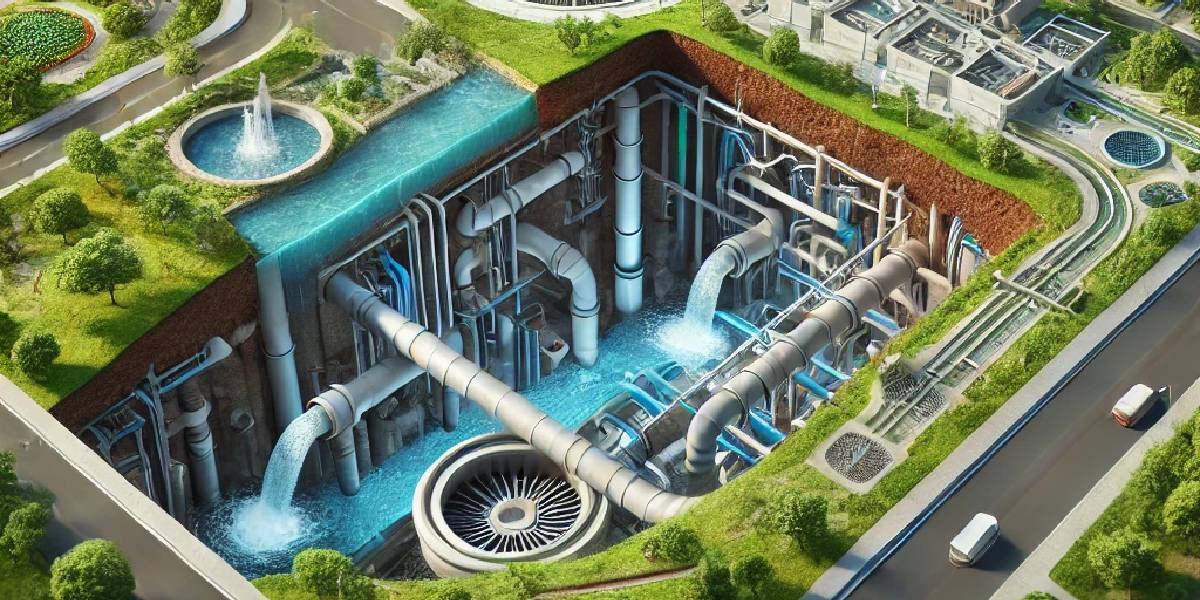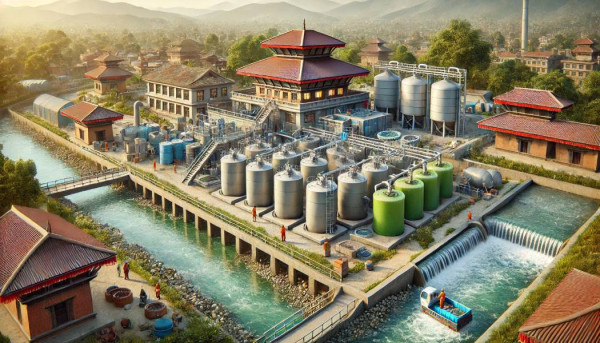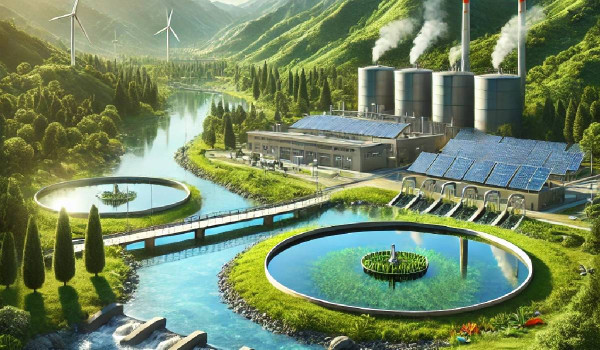News & Blogs
Understanding the Backbone of Urban Infrastructure: A Deep Dive into Modern Sewerage Systems

Sewerage systems play a crucial role in maintaining urban hygiene, environmental sustainability, and overall livability. Though often hidden beneath city streets, these networks ensure public health, prevent pollution, and support economic growth. With rapid urbanization, particularly in Nepal, the need for efficient and scalable sewerage infrastructure has never been greater.
The Importance of Sewerage Systems in Urban Development
- Public Health: Prevents the spread of waterborne diseases.
- Environmental Protection: Reduces pollution in rivers and groundwater.
- Economic Growth: Creates safer, cleaner urban environments that attract investment.
As cities expand, modern sewerage systems are vital to managing waste effectively and maintaining sustainable urban growth.
Historical Evolution of Sewerage Systems
- Ancient Civilizations: The Indus Valley and Roman Empire developed early drainage systems.
- 19th Century Developments: Cities like London and Paris implemented underground sewer networks to combat disease outbreaks.
- Modern Advances: Today’s systems emphasize efficiency, hygiene, and sustainability, integrating advanced treatment methods and smart monitoring technologies.
Components of Modern Sewerage Systems
A well-functioning sewerage system consists of several key elements:
- Pipes and Conduits: Transport wastewater from households and industries.
- Pumping Stations: Move wastewater over long distances or uphill.
- Treatment Plants: Purify wastewater through sedimentation, biological treatment, and disinfection.
- Stormwater Drains: Manage rainwater runoff, reducing flood risks.
- Manholes and Inspection Chambers: Facilitate maintenance and monitoring.
Each component plays a crucial role in ensuring efficient wastewater management and water recycling.
Types of Sewerage Systems: Combined vs. Separate
Sewerage systems are typically categorized into two types:
- Combined Systems: Use a single pipeline for sewage and stormwater. Cost-effective but prone to overflow during heavy rains.
- Separate Systems: Have distinct pipelines for sewage and stormwater, reducing contamination risks. More expensive but ideal for flood-prone regions like Nepal’s Terai.
The choice between these systems depends on urban density, climate, and budget.
The Role of Technology in Modern Sewerage Management
Innovative technologies are transforming sewerage systems:
- Smart Sensors: Monitor flow rates, detect blockages, and identify leaks.
- GIS Mapping: Assists in planning and maintaining sewer networks.
- AI-Powered Predictive Maintenance: Identifies potential failures before they occur.
- Advanced Treatment Methods: Techniques like membrane bioreactors and UV disinfection improve water quality.
In Nepal, integrating these technologies could help address challenges like aging infrastructure and rapid urban sprawl.
Environmental Impact and Sustainability of Sewerage Systems
To minimize ecological damage, modern sewerage systems focus on sustainability:
- Green Infrastructure: Rain gardens and permeable pavements manage stormwater naturally.
- Energy Recovery: Treatment plants convert sewage sludge into biogas.
- Water Reuse: Treated wastewater is repurposed for irrigation and industrial use.
For eco-sensitive regions like the Himalayas, sustainable sewerage practices are essential to preserving natural resources.
Common Challenges in Urban Sewerage Systems
Despite advancements, sewerage systems face several challenges:
- Population Growth: Outdated systems struggle to manage increasing waste volumes.
- Climate Change: Intense rainfall can overwhelm drainage capacity.
- Funding Constraints: Many municipalities lack resources for upgrades.
- Public Awareness: Poor waste disposal habits lead to blockages and inefficiencies.
In Kathmandu, aging infrastructure and unplanned urban expansion further exacerbate these issues.
Future Trends in Sewerage System Design and Implementation
The future of sewerage systems lies in innovation and resilience:
- Decentralized Systems: Small-scale treatment units reduce reliance on centralized plants.
- Climate-Resilient Design: Infrastructure is built to withstand floods and landslides.
- Community-Led Initiatives: Engaging locals in maintenance and waste management.
- Circular Economy Approaches: Transforming sewage into useful resources like fertilizers and bioenergy.
Nepal’s cities can benefit from adopting these forward-thinking solutions early.
The Critical Role of Sewerage Systems in Urban Living
Sewerage systems are fundamental to urban life, ensuring sanitation, environmental sustainability, and economic prosperity. With increasing urbanization, investing in modern, efficient sewerage infrastructure is essential for long-term resilience.
CivilTech: Leading the Way in Urban Infrastructure Solutions
Sewerage systems are the lifelines of cities, safeguarding health, ecosystems, and economic progress. As urbanization continues, investing in modern, sustainable infrastructure is no longer optional—it’s a necessity. For nations like Nepal, where urban growth and environmental preservation must coexist, reimagining sewerage systems is key to building resilient, livable cities.
At CivilTech, we’re committed to advancing cutting-edge solutions for Nepal’s infrastructure challenges. Explore our projects and insights to learn how we’re shaping the future of urban living.

-1742900752.jpg)

